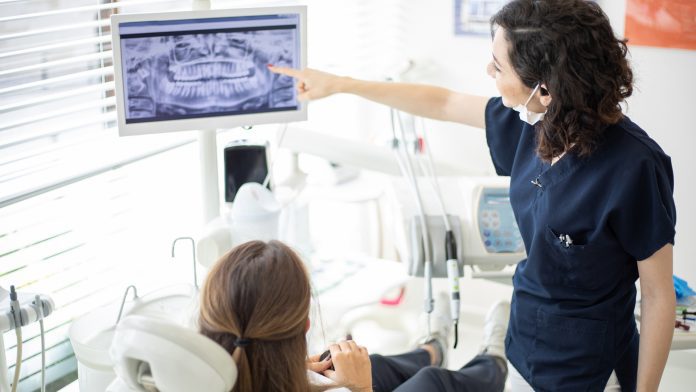
University of Birmingham researchers are developing a rapid test for periodontal disease and expect the technology to be used in point-of-care settings.
Periodontal disease, also known as gum disease, causes the gums to become red, swollen and bleed. The condition is treated with deep cleaning under the gums, antibiotics, tooth removal or gum surgery.
Currently, a dentist will do a physical exam to spot periodontal disease in patients. A new rapid test that can be conducted anywhere could be a useful tool in various settings beyond the dentist chair.
The effects of untreated periodontal disease
Untreated periodontal disease can lead to serious effects on the body; it can correlate with an inflammatory response that affects the course of disease in other conditions.
Periodontal disease can lead to:
- In type 2 diabetes, periodontal disease increases the risk of heart failure.
- In cardiovascular disease, it increases the risk of stroke or heart failure.
- In rheumatoid arthritis cases, it can increase the severity of the disease.
- In chronic obstructive pulmonary disease, it increases the risk of irreversible step-changes in disease severity.
As a result, with patients diagnosed with either of these medical conditions, early detection and treatment of periodontal disease is a priority.
Designing a rapid test
Professor Tim Albrecht from the University’s School of Chemistry and Dr Melissa Grant from the School of Dentistry collaborated on a new technique that provides a rapid and accurate assessment of the presence and extent of the disease from a sample of saliva that can be carried out in any healthcare setting.
The test consists of a specialised probe and a detector that provides a quantitative measurement of biomarkers that can suggest whether the patient has periodontal disease and its severity. The biomarker was identified and validated by the researchers at the university’s Periodontal Research Group and published earlier this year in the Journal of Clinical Periodontology.
Professor Albrecht said: “We believe the device we are prototyping will be the first dental probe that can identify periodontal disease in this way. It will detect periodontitis quickly and easily in a variety of healthcare settings, opening up opportunities for monitoring and early intervention in the patients with the comorbid disease, who would benefit most from rapid treatment for periodontitis.”
Dr Grant said: “The ability to detect and profile disease biomarkers in real-time will allow monitoring for disease severity and in particular, the transition between milder and more severe forms of gum disease. This will benefit not only dental health but also reduce costs and capture patients for whom periodontal treatment may, in the long run, be life-saving.”
The researchers are aiming to develop a probe small enough to be inserted into the space between gums and teeth, to allow dentists to collect fluid from specific areas of the mouth, which can accurately identify the infection.









